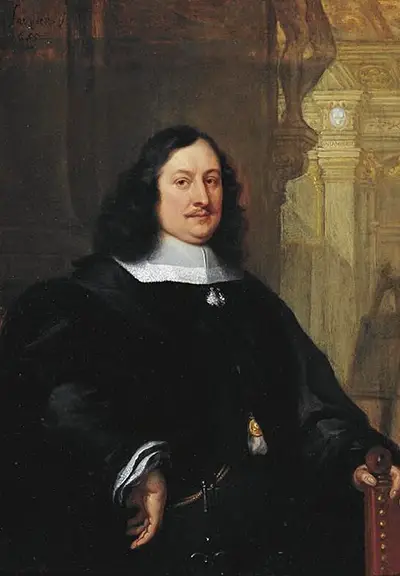David Teniers the Younger was part of the Flemish Baroque movement of the 17th century and produced a wide ranging and highly regarded oeuvre which continued the artistic legacy of the famous Teniers family.
Introduction
Despite working as a court painter for much of his career, David II was able to flex his creative mind and take his finely honed technical skills into multiple avenues of expression. Perhaps today he is most famous for his gallery paintings, in which impressive collections of art were captured within a single canvas.
The Teniers Family and its Artistic Lineage
David the Younger was always destined to become an artist. His father was an established artist of religious content for cabinets as well as decorating local religious buildings. He had built up a strong series of connections within the industry and the family was also well placed in Antwerp, which had a growing reputation within the visual arts at this time.
Juliaan III, Theodoor and Abraham would follow their brother into the art industry too, though their legacy as artists would never reach the level of either David or their father. His nephew, Jan van Kessel the Younger, would also become a respected artist. David the Younger worked very much under his father's wing in the early years, helping to bring money into the family home, whilst being taught the fundamentals by his father as a reward.
After completing his unofficial apprenticeship, David would spread his wings, travelling around Europe in search of creative inspiration and also new work opportunities. Although he travelled as far afield as Paris and London, there were also many opportunities within Flanders and a whole host of respected artists to learn from.
Collaboration with Flemish Masters
There was a strong spirit of collaboration within Flemish art during the 17th century, with artists regualrly inviting each other to reflect on each other's work and share ideas. David Teniers' strongest relationship would be with Jan Brueghel the Younger, with their respective abilities complementing each other well. Jan would often handle the figurative elements, leaving large expanses of the canvas for David to fill with eye catching, sprawling landscape scenes.
Over time, the two were able to make their contributions fit together seamlessly, and they clearly trusted each other's abilities, working on a number of artworks together. Additionally, he would also collaborate at other times with the likes of Lucas van Uden, Jan Davidsz de Heem and Adriaen van Utrecht.
David Teniers was the most famous 17th-century painter of peasant life. He enjoyed international popularity in his own lifetime and during the 18th century, especially in France.
The National Gallery
Impressive Variety of Genres
Few artists have successfully navigated as many artistic genres as David Teniers the Younger. Whilst he is best remembered for his unique gallery paintings, where private art collections were displayed together in all their glory, he also achieved success with history paintings, genre, landscapes, portraits and still life.
The artist had an incredible thirst for work, producing several thousands of paintings by the end of his career. Rather than becoming something of a production line, each item was carefully planned and he constantly strove for new ideas for his work. He achieved this high productivity through hard work, rather than cutting back on quality.
The artist, perhaps under the influence of his father's oeuvre, would also complete religious artworks which always found him work within this highly religious time. Today he is highly regarded for his attention to peasant life, which became one of the hallmarks of north European art from the 15th to 17th century, also thanks to members of the Bruegel family and other related artists.
David Teniers the Younger Gallery
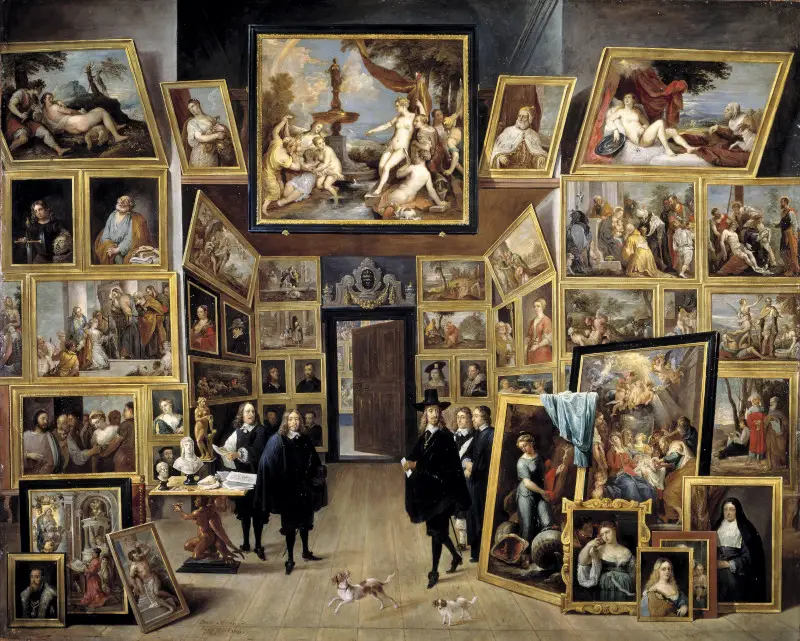
Archduke Leopold Wilhelm in his Gallery in Brussels, circa 1647–1651
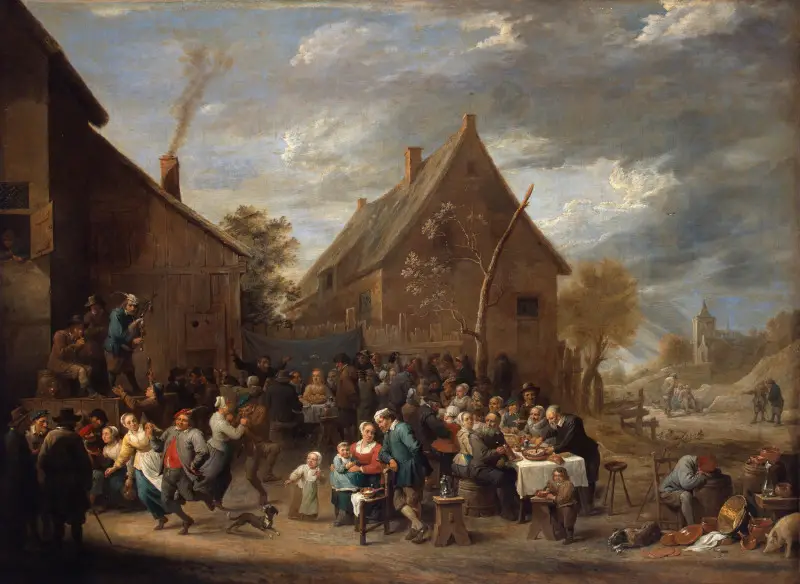
Peasant Wedding
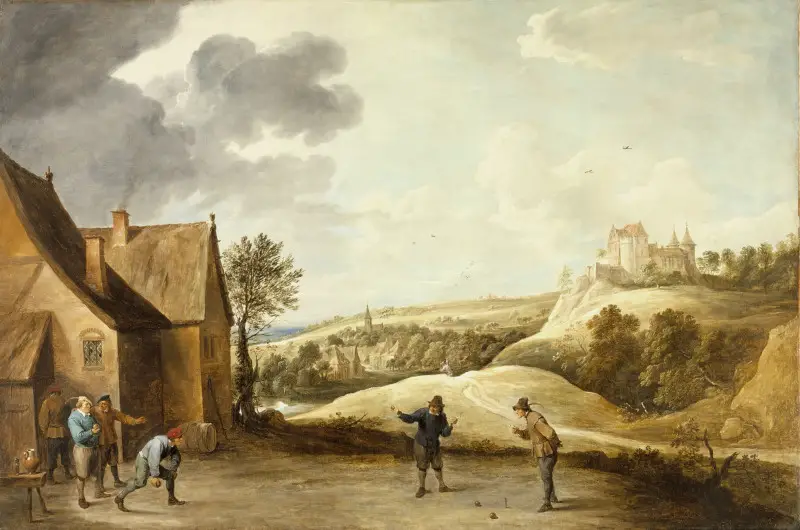
Landscape with Peasants Playing Bowls outside an Inn
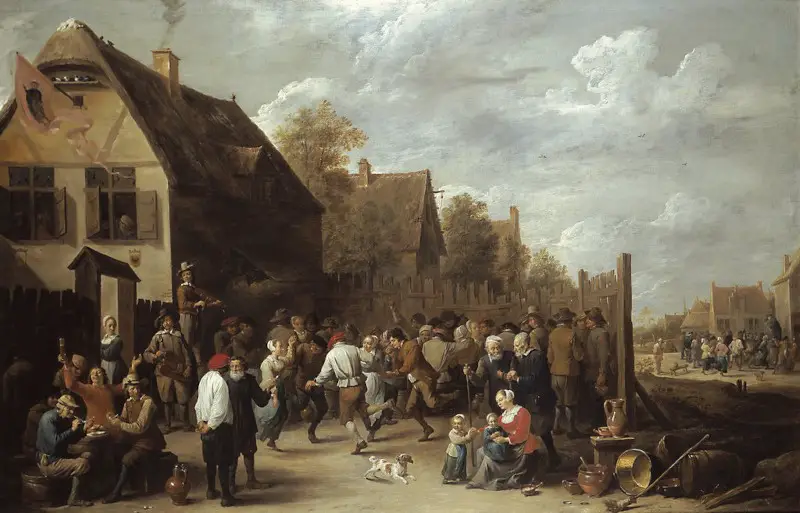
Village Festival
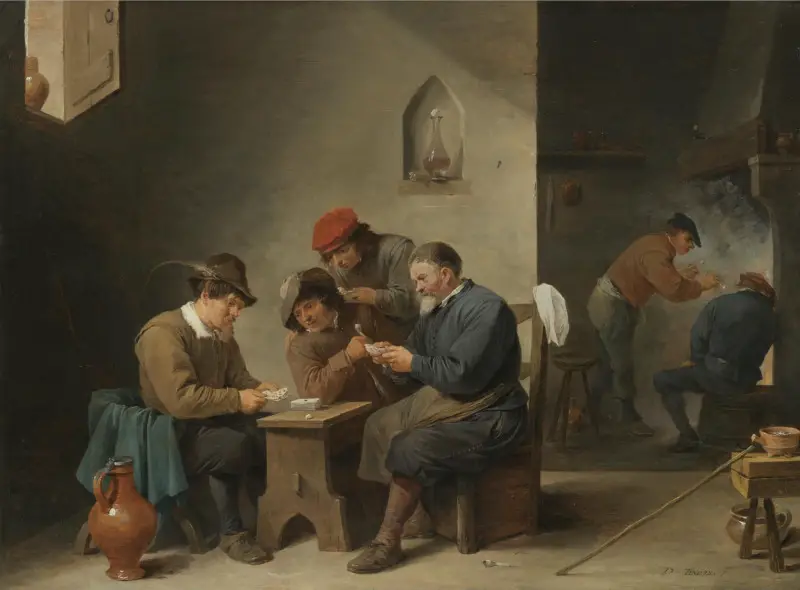
Card Players
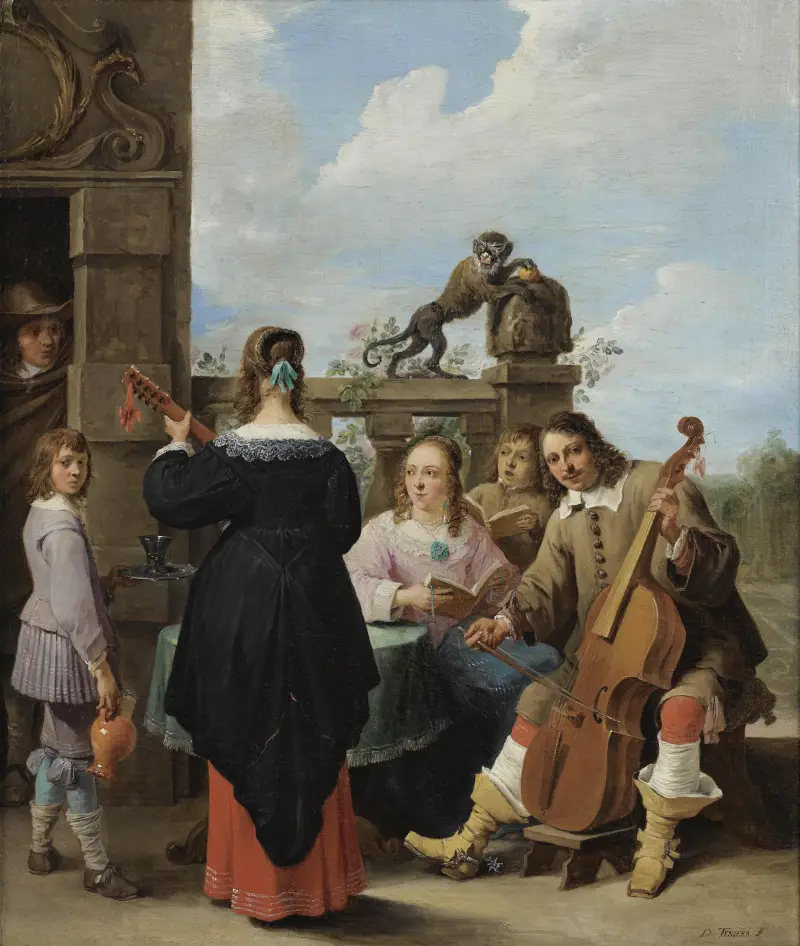
A Family Concert on the Terrace of a Country House
Court Painter to Archduke Leopold Wilhelm
The artist served as court painter to Archduke Leopold Wilhelm of Austria from around 1650 and relocated to Brussels in order to take up this position. Whilst the Archduke would eventually resign his position and no-longer be the artist's employer, by this stage Teniers' work was well known by many European aristocrats, and his success and reputation was assured. By allowing his work to be shared with the likes of Queen of Sweden, William II, Prince of Orange and Philip IV of Spain, many of these grateful recipients would later become donors in their own right.
Teniers' Memorable Gallery paintings
 Archduke Leopold Wilhelm in his Gallery in Brussels, circa 1647–1651
Archduke Leopold Wilhelm in his Gallery in Brussels, circa 1647–1651
Major Artworks
A Family Concert on the Terrace of a Country House
This delightful piece is dated to around c. 1640–49 and ingeniously is believed to have been a self portrait, with the artist pictured on the right hand side, and other members of his family also included. This style of self portrait might remind some of Velazquez's Las Meninas and many other artists have also included themselves in a subtle manner.
 A Family Concert on the Terrace of a Country House
A Family Concert on the Terrace of a Country House
The Soap Bubbles
The artist worked collaboratively with his nephew, Jan van Kessel the Elder, to put together the highly detailed Soap Bubbles from around 1660-1670. This features an incredibly complex garland, with an unusual composition which again brought some creativity and innovation into the artist's oeuvre. Jan Brueghel the Elder, with whom they were both familiar, is believed to have started this genre.
Legacy as an Artist
David Teniers the Younger's greatest prestige was to serve as court painter under Archduke Leopold Wilhelm, which also allowed his legacy to spread amongst most major European aristocratic families. His contributions to genre painting helped to establish this artistic style, which would spread into the centuries that followed, and also become a major hallmark of north European art, though there were many other artists who contributed to this as well.
Teniers also helped to keep the Flemish tradition of families of artists alive, just as the Bruegels/Brueghels had also done. He was the most impressive of his generation within the family, and worked hard to encourage his own offspring to continue the family trade.
Conclusion
We can conclude that David Teniers the Younger helped to continue his family's artistic success, whilst also making some contributions to genre painting which would further establish northern Europe as the centre for this artistic style. Visually, most are more familiar with his gallery paintings, and he was one of just a few artists to promote the possibility of including art within art, though his efforts were memorably complex and very much to the pleasure of his prominent donors.



